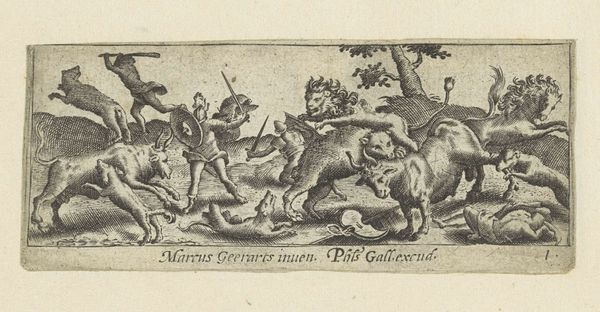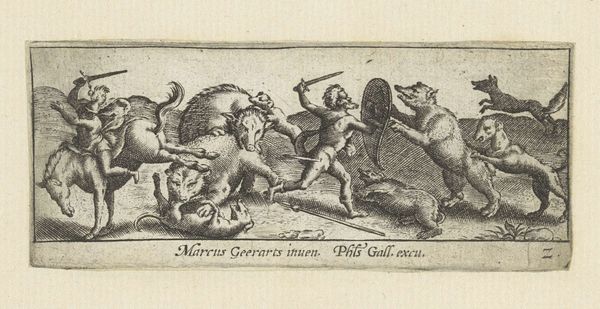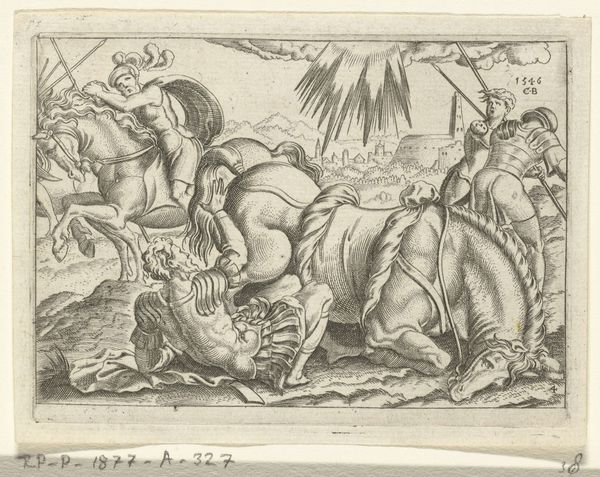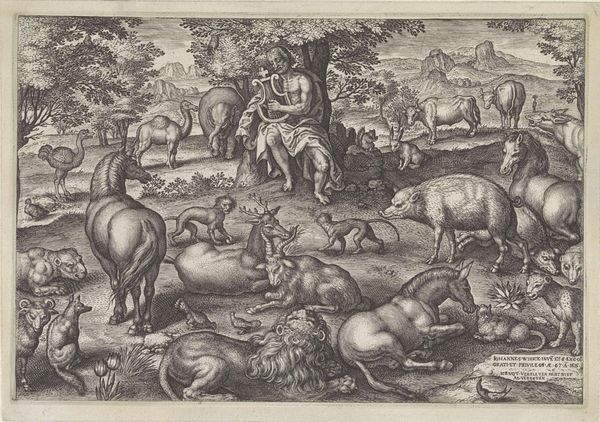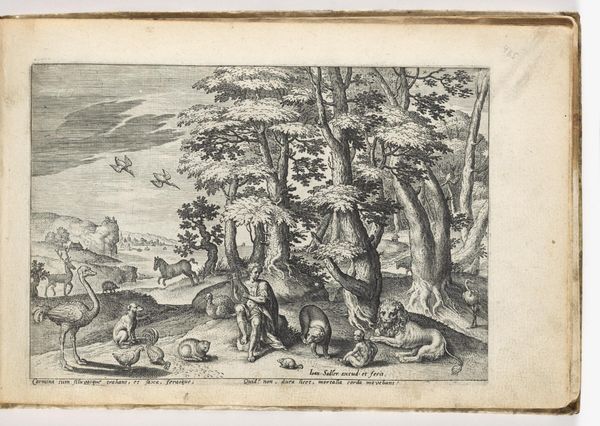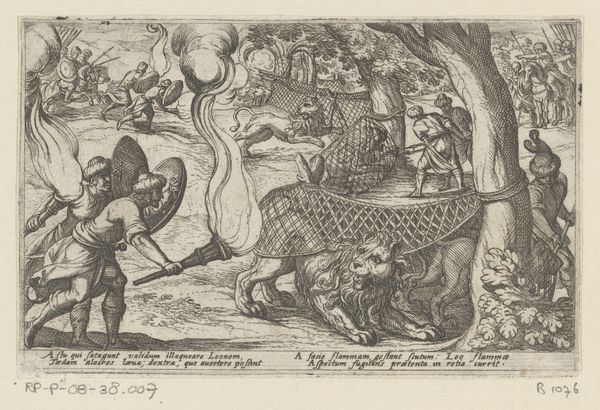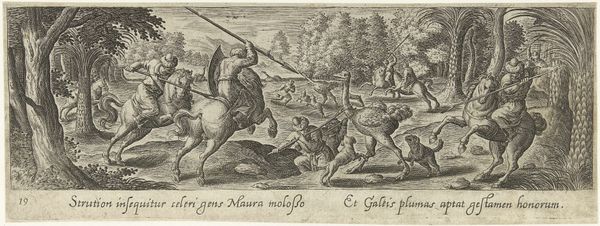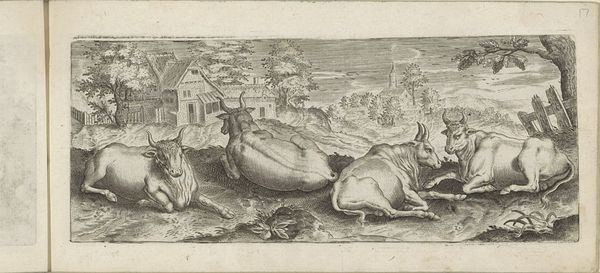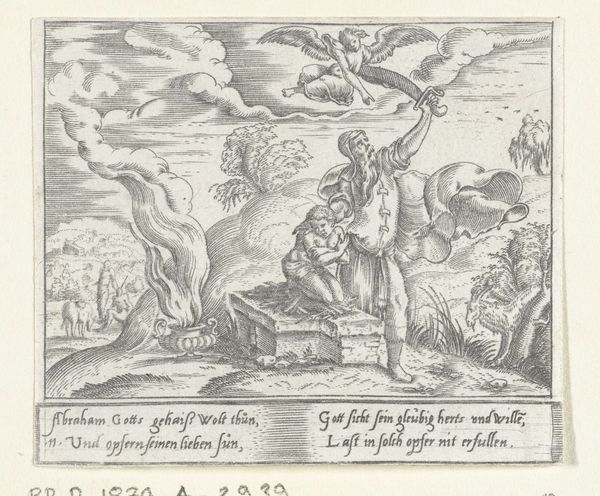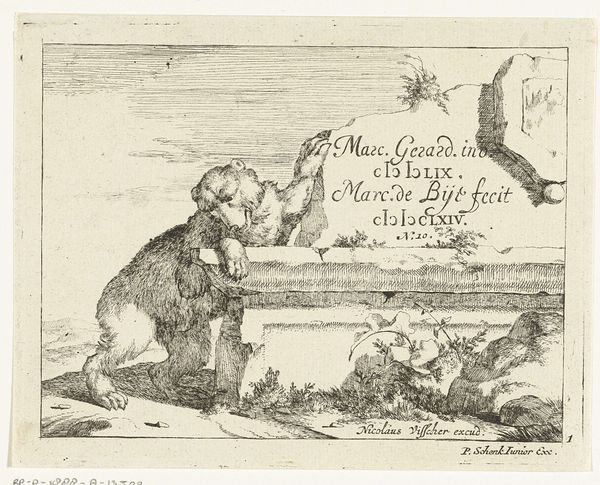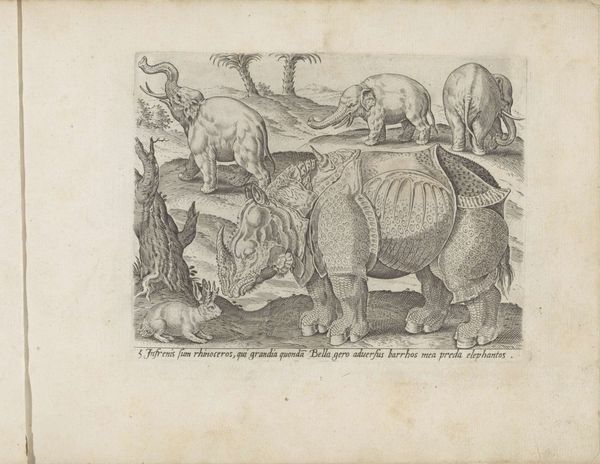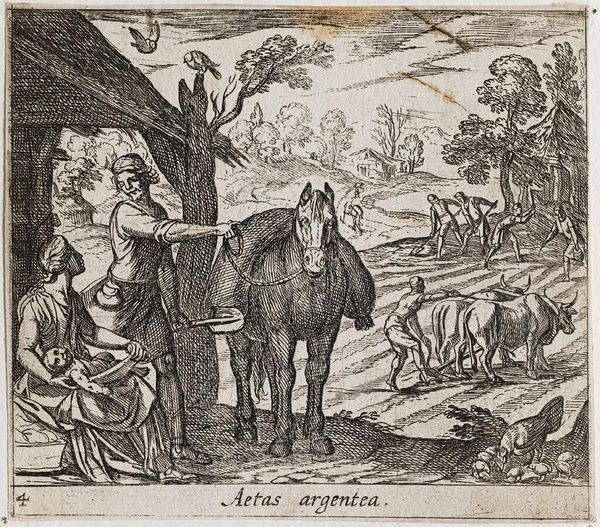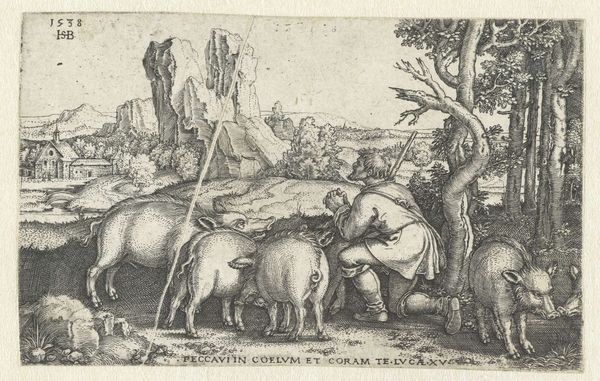
print, engraving
# print
#
pen sketch
#
old engraving style
#
landscape
#
mannerism
#
figuration
#
history-painting
#
engraving
Dimensions: height 40 mm, width 94 mm
Copyright: Rijks Museum: Open Domain
Editor: We’re looking at "Landscape with Hunters, Elephants, Lion and Leopard," an engraving by Marcus Gheeraerts I, dating from around 1570-1612. It’s teeming with figures—humans, real animals, mythical beasts all clashing. It feels almost chaotic. What do you see happening here? Curator: What strikes me immediately is the density and how it speaks to the cultural fascination with exoticism and control that defined the period. It presents a vision of nature as a site of conflict but also as a demonstration of human power over the natural world, or attempts to, at least. The composition also recalls tapestries – do you notice that flatness, how the scenes jostle for space? Editor: Absolutely, it's like several stories are unfolding at once without much spatial separation. I wonder about the symbolism of using both hunters *and* exotic animals... Curator: Well, consider the context. Europe was expanding its colonial reach. Prints like these circulated widely. So they served not only as art but also as a way to visualize, and therefore claim dominion over, far-off lands and their inhabitants. Are these simply images of conquest being mass produced? Editor: So, it's less a depiction of actual hunting and more of an emblem of imperial ambitions being consumed in Europe? I never thought of it that way before, but it totally reframes it. Curator: Exactly. How the image is being consumed becomes very important. By examining prints like this, we reveal how cultural power was, and continues to be, produced through art. What do you take away? Editor: I'll definitely look more closely at how art reflected colonial ideologies of that time. This really connects art to bigger socio-political contexts. Thanks!
Comments
No comments
Be the first to comment and join the conversation on the ultimate creative platform.
